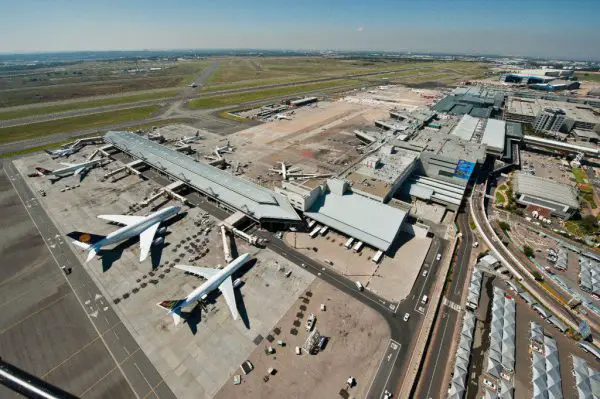There has been a slow but steady recovery in air traffic for African airports after COVID-19 pandemic caused the largest drop ever in global passenger traffic. In 2022 especially the airports experienced a 56% rise compared to 2021 with the total passengers in the third quarter of 2022 rising to 51,696,274 passengers per year.
Summary of the 10 busiest airports in Africa
- Cairo International Airport in Egypt (annual capacity in 2022; 20,009,336)
- R. Tambo International Airport in South Africa (annual capacity in 2022; 14,789,508)
- Cape Town International Airport in South Africa (annual capacity in 2022; 7,876,183)
- Mohammed V International Airport in Morocco (annual capacity in 2022; 7,637,643)
- Hurghada International Airport in Egypt (annual capacity in 2022; 7,164,088)
- Addis Ababa Bole International Airport in Ethiopia (annual capacity in 2022; 6,656,516)
- Jomo Kenyatta International Airport in Kenya (annual capacity in 2022; 6,556,569)
- Murtala Muhammed International Airport in Nigeria (annual capacity in 2022; 6,526,023)
- Houari Boumediene International Airport in Algeria (annual capacity in 2022; 6,317,793)
- Nnamdi Azikiwe International Airport in Nigeria (annual capacity in 2022; 5,985,596)
1. Cairo International Airport

Cairo International Airport is located in Heliopolis, to the northeast of Cairo, Egypt, on an approximately 37 square kilometres piece of land. It was built during World War II, by the United States Army Air Forces as John Payne Field Air Force Base to serve the Allied Forces. When American forces left the base at the end of the war, the Civil Aviation Authority took over the facility and began using it for international civil aviation.
Currently, Cairo international airport is the largest airport in Africa covering a land area of approximately 37km2. Served by a total of three terminals and three 4000km runways, the airport has the capacity to handle about 28 million passengers per year.
In 2022 it served 20,009,336 passengers which is approximately 71.5% of its total capacity.
2. R. Tambo International Airport

R. Tambo is located in Kempton Park, Gauteng, South Africa. It was established in 1952 as Jan Smuts International Airport, a name that was changed to Johannesburg International Airport in 1994 when the newly elected African National Congress (ANC) government implemented a policy of not naming airports after politicians. This policy was later reversed, and in October 2006 the airport was re-named after the anti-apartheid politician, Oliver Reginald Tambo.
Also Read: The Largest Airports in Canada, North America, by Area
The airport is arguably the second largest in Africa with a total area of about 16.73 km2. It is equipped with 2 runways which measure 3400 and 4400 meters, 6 terminals, 5 domestic lounge offerings, 9 international lounges, and 140 retail stores. The airport can comfortably handle up to 28 million passengers per year, however in 2022 it served only 14,789,508, slightly over 50% of its full capacity.
3. Cape Town International Airport
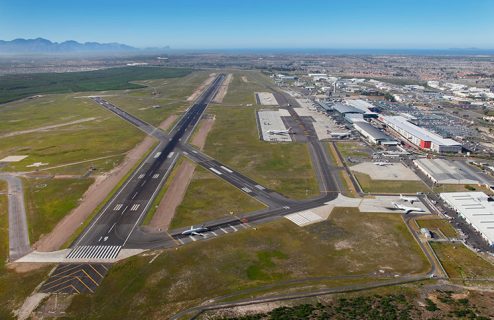
Located approximately 20 kilometres from the Cape Town City Centre in South Africa, Cape Town International Airport was opened back in 1954 as D.F. Malan Airport to replace Cape the city’s previous airport (Wingfield Aerodrome).
The airport is South Africa’s largest, covering a land area of about 2.8 km2. The airport’s capacity is not available however by assumption it could be more than 15 million passengers per year. Reportedly, in 2022 Cape Town International Airport handled up to 7,876,183 passengers per annum without a strain.
Essentially the airport has one central terminal building that connects the north and south terminals.
4. Mohammed V International Airport
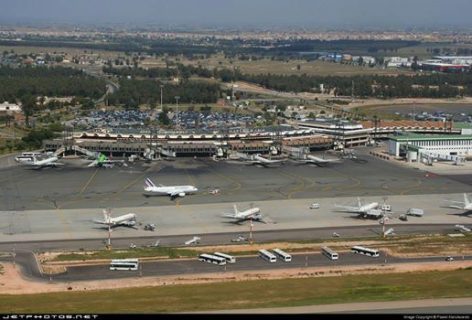
Mohammed V International Airport sits on a 1.1 km2 piece of land located in Nouaceur Province in the Moroccan region of Casablanca-Settat. It has two operative terminals i.e. Terminal 1 and Terminal 2. However there is also a third terminal, Terminal 3, that is currently out of service.
While the airport’s built capacity is not readily available, there are reports that in 2022 it comfortably served 7,637,643 passengers per year.
5. Hurghada International Airport

Located approximately 5 kilometers southwest of El Dahar, this airport which is the international airport of Hurghada in Egypt, is the 5th busiest in Africa and the second busiest Cairo International Airport.
Currently Hurghada International Airport features two passenger terminals i.e. Terminal 1 and Terminal 2. Terminal 2 was constructed between 2014 and 2019 at a cost of $335 million. It has a total of 92,000 square meters spread on three levels, 72 check-in counters and 20 departure gates.
The completion of this terminal increased the airports annual built capacity to 13 million passengers. In 2022 the airport served a total of 7,164,088 passengers.
6. Addis Ababa Bole International Airport

Formerly known as Haile Selassie I International Airport, Addis Ababa Bole International Airport is located in the Bole district, southeast of Addis Ababa, Ethiopia. The airport was built in the 1960s after Ethiopian Airlines realized the runway at Lideta Airport, the former main air hub for Ethiopian, was too short for its new jet aircraft, the Boeing 720.
While there are no records showing the actual size of the airport, it is arguably the third largest in Africa with a capacity to handle between 22 million passengers per year. Currently, Bole International Airport is served by two terminals with 11 gates, plus more than 30 remote aircraft parking stands behind both Terminals.
In 2022 Addis Ababa Bole International Airport served 6,656,516 passengers.
7. Jomo Kenyatta International Airport

JKIA is located in the Embakasi suburb approximately 18 kilometers southeast of Nairobi’s central business district in Kenya. It was originally named Embakasi Airport, but the name was changed in 1978 to honour Jomo Kenyatta, Kenya’s first president, and prime minister.
Plans for the construction of the airport date back to 1945, a time that the colonial power (Britain) and its national airline, BOAC, was worried that the existing airport at Eastleigh was inadequate for post-War civilian airliners.
The actual construction work started in January 1954. In March 1958, Embakasi Airport was opened by the last colonial governor of Kenya, Sir Evelyn Baring. To date, the JKIA has two terminals, close to five lounges, and 2 runways. Its capacity is approximately 18.5 million passengers.
8. Murtala Muhammed International Airport
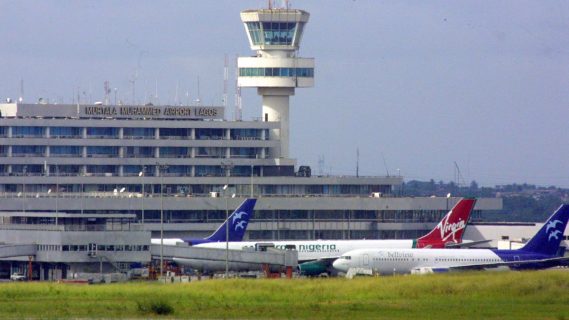
Murtala Muhammed International Airport is an international airport located in Ikeja. It is the main airport serving the entire Lagos State in Nigeria.
The airport, originally known as Lagos International Airport, was built during World War II. In the mid 1970s, it was named after a former Nigerian military head of state Murtala Muhammed.
It consists of an international and a domestic terminal, located approximately one kilometre from each other. Both terminals share runways. In 2022 Murtala Muhammed International Airport served a total of 6,526,023 passengers.
9. Houari Boumediene International Airport
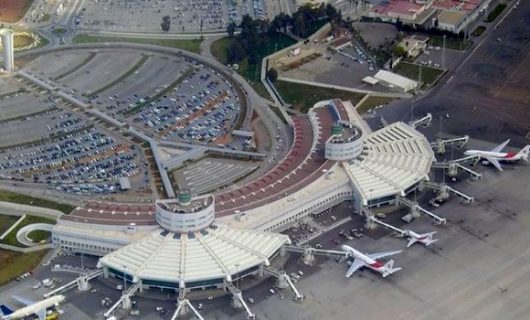
Also known as Algiers Airport or Algiers International Airport, this is the main international airport serving Algiers, the capital city of Algeria. Particularly, the airport is located approximately 16.9 km east-southeast of the city. The airport was built back in 1924 and named Maison Blanche Airport.
Houari Boumediene International Airport features a total of about four terminals three runways and 1 helipad. It also has a 7000 capacity car park, and 320 rooms plus 3 restaurants hotel.
The airport’s full capacity is 18.5 million passengers a year thanks to its recently built runway. In 2022, it served a total of 6,317,793 passengers.
10. Nnamdi Azikiwe International Airport

In 2022 this international airport serving Abuja, in the Federal Capital Territory of Nigeria had a traffic of 5,985,596. This made made the 10th busiest airport in Africa.
Named after Nigeria’s first President, Nnamdi Azikiwe, the aiprot has an international and a domestic terminal that share its single runway.
